You can determine your running fitness age by calculating your VO2 max using the formula VO2 max = 15.3 × (MHR ÷ HRrest), leveraging smartwatch technology that analyzes activity intensity and heart rate data, tracking key physiological metrics like heart rate variability and recovery patterns, using validated online calculators with transparent algorithms, and monitoring your progress consistently over months rather than isolated sessions. These five methods will reveal whether your cardiovascular system performs younger or older than your actual age, and there’s much more to uncover about optimizing each approach.
Calculate Your VO2 Max Using Heart Rate Data
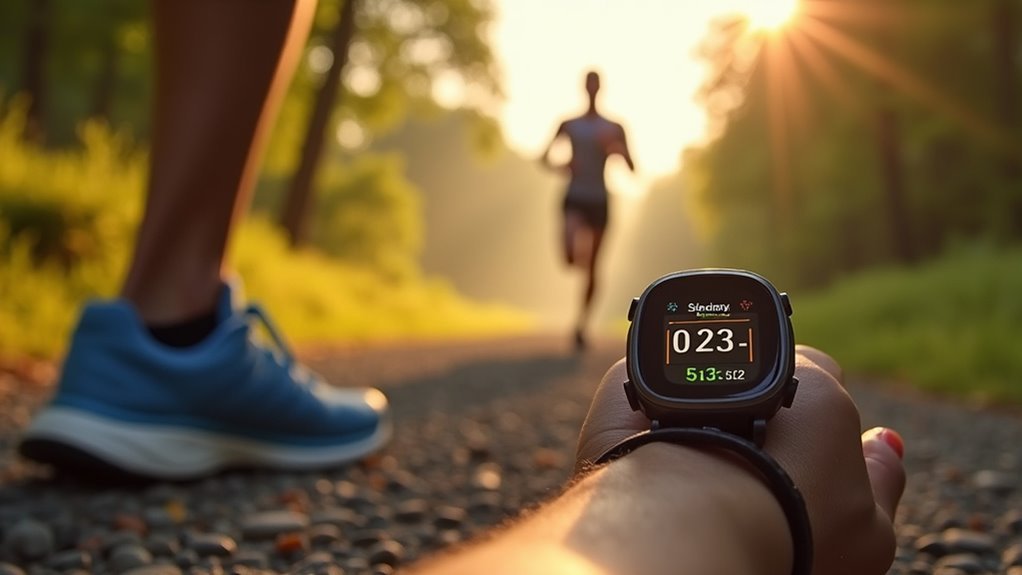
Since your VO2 max represents the gold standard for measuring cardiovascular fitness, you can estimate this essential metric using heart rate data when laboratory testing isn’t available.
Start by recording your resting heart rate first thing in the morning before rising. Count heartbeats for 20 seconds and multiply by three for beats per minute.
Next, calculate your maximum heart rate using the formula: MHR = 208 – (0.7 × Age).
Apply the enhanced VO2 max formula: VO2 max = 15.3 × (MHR ÷ HRrest).
For accuracy, measure your resting heart rate over multiple days and average the results. Regular endurance training can improve your VO2 max by 15-20%, making this calculation particularly valuable for tracking fitness improvements over time.
Remember that this heart rate-based calculation provides an estimate rather than laboratory precision, but it’s useful for tracking your cardiovascular fitness progress.
Leverage Smartwatch Technology for Accurate Fitness Age Assessment
While laboratory testing remains the gold standard for VO2 max measurement, modern smartwatches offer sophisticated algorithms that can accurately assess your fitness age using continuously collected biometric data.
Your smartwatch analyzes multiple factors including activity intensity, resting heart rate, and BMI to estimate how fit you’re compared to others your age and gender. Garmin devices use various methods for fitness age calculations, while other brands may provide fitness analysis scores that evaluate your cardiorespiratory fitness.
Modern smartwatches leverage comprehensive biometric analysis to deliver personalized fitness assessments that rival traditional laboratory testing methods.
Key advantages of smartwatch fitness age assessment:
- Remote monitoring – Track physiological responses during exercises without lab visits
- Continuous data collection – Consistent heart rate monitoring provides accurate long-term insights
- Personalized metrics – PAI considers your age, gender, and heart rate data for customized results
- Progress tracking – Monitor improvements over time to adjust training routines effectively
Regular physical activity can improve your VO2 max and subsequently reduce your fitness age, making consistent exercise essential for achieving optimal fitness levels.
Track Key Physiological Metrics Through Wearable Devices
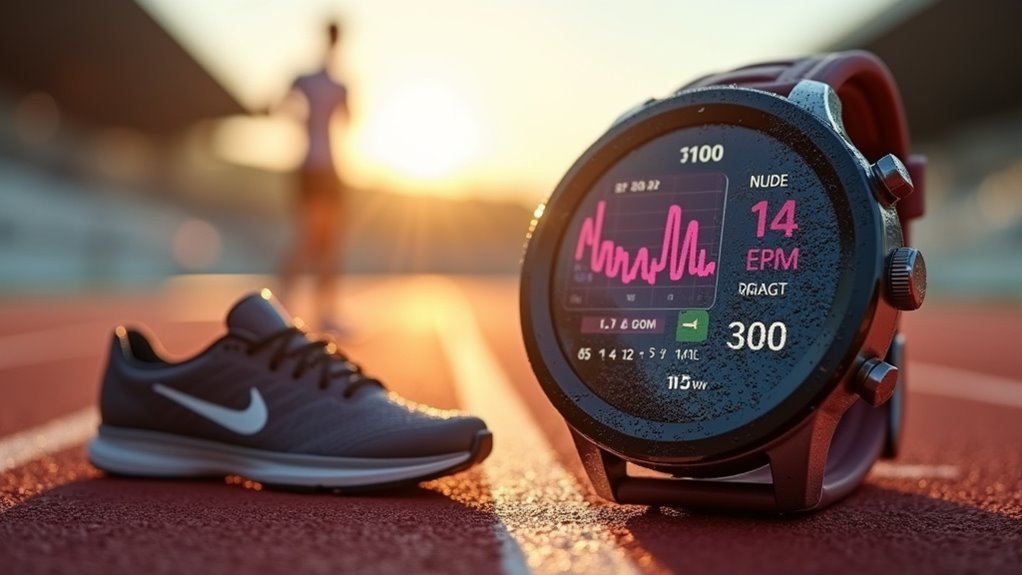
Beyond simple step counting, today’s wearable devices capture a thorough array of physiological metrics that directly impact your fitness age assessment.
Your smartwatch monitors heart rate variability to assess recovery and stress levels, while tracking cadence and vertical oscillation to analyze your running form efficiency. These devices provide real-time feedback on caloric expenditure, helping you manage energy balance during training sessions.
Sleep quality data reveals how well you’re recovering between workouts, directly affecting your physiological age. Wearables also play a crucial role in injury prevention by continuously monitoring these key physiological markers for early warning signs.
Movement sensors detect acceleration patterns and position-specific metrics that highlight areas for improvement. By consistently tracking these detailed physiological markers, you’ll gain valuable insights into your body’s adaptation to training, enabling more accurate fitness age calculations and personalized program adjustments.
Use Validated Online Calculators and Apps for Baseline Measurements
Although wearable devices provide continuous monitoring, you’ll need validated online calculators and apps to establish accurate baseline measurements for your fitness age assessment. Choose platforms that utilize VO₂max calculations—the gold standard for cardiovascular fitness—and leverage large-scale studies like the FRIEND registry.
Validated calculators using VO₂max standards and population studies like FRIEND registry provide essential baseline measurements beyond basic wearable monitoring.
Look for apps that integrate seamlessly with established health ecosystems such as Apple Health for automatically updated data. These apps typically display your fitness level as a percentile ranking compared to peers of the same age, providing clearer context for your cardiovascular health status.
- Select apps with transparent, published algorithms that reflect robust population benchmarks for reliable fitness age calculations
- Input precise personal data including age, sex, height, weight, and heart rate metrics from your wearable devices
- Cross-reference results from multiple validated platforms to confirm your baseline measurements and gain broader insights
- Enable automated data fetching from wearables to streamline updates and track progress over time
Monitor Progress Over Time With Consistent Data Collection
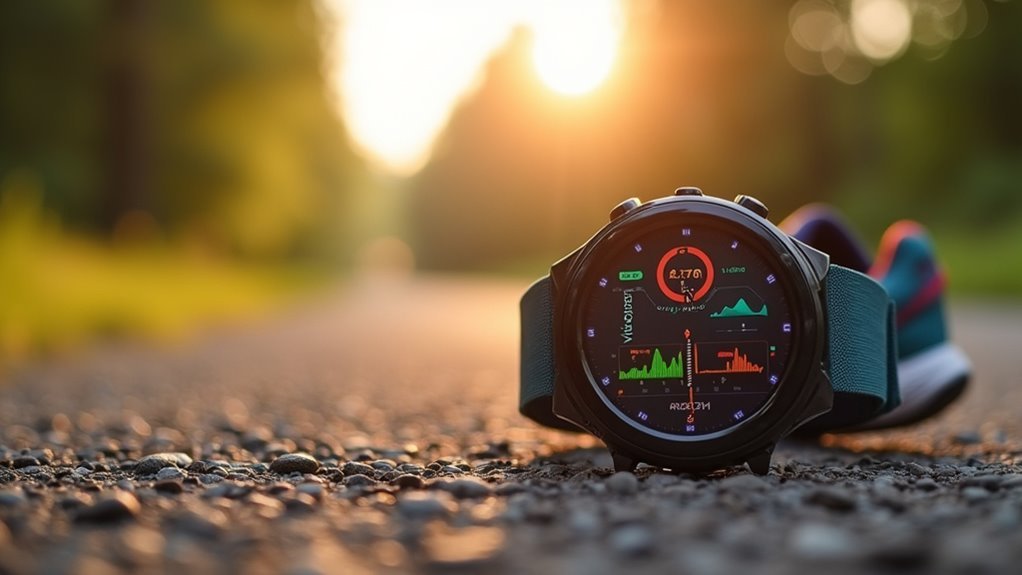
Once you’ve established your baseline fitness age measurements, the real work begins with systematic data collection that tracks your progress over time.
You’ll need to monitor your heart rate at consistent speeds, record distances and workout times, and maintain detailed training logs that include routes, intensities, and post-run feelings.
Consistency is essential—conduct tests under identical conditions using the same equipment at regular intervals.
Focus on targeted metrics like MAF heart rate monitoring and FTP testing to assess both aerobic and anaerobic improvements.
Utilize wearable devices and running apps for automated data collection, then analyze your information through graphical visualizations and statistical trends.
Compare current data to your initial baselines to measure genuine improvement in your running fitness age.
Remember that progress should be evaluated over months rather than judging your fitness based on isolated sessions that may not reflect your true development.
Frequently Asked Questions
How Does Age Affect the Accuracy of Fitness Age Calculations?
Age considerably affects your fitness age accuracy. If you’re young, calculations may overestimate your fitness age by twenty years. If you’re older, they’ll likely underestimate it by ten years.
Can Medical Conditions or Medications Impact My Running Fitness Age Results?
Medical conditions and medications can greatly impact your running fitness age results. Chronic diseases, heart medications, and musculoskeletal disorders affect your VO₂ max, endurance, and recovery, making your fitness age appear older than reality.
What’s the Difference Between Fitness Age and Biological Age Measurements?
Fitness age focuses specifically on your cardiovascular fitness through VO2 max testing, while biological age measures your overall physiological state using multiple biomarkers including metabolism, muscle mass, and cognitive function.
How Often Should I Recalculate My Fitness Age for Meaningful Changes?
You should recalculate your fitness age every 3-6 months for meaningful changes. Avoid daily or weekly recalculations since fitness improvements happen gradually. Recalculate immediately after major lifestyle changes or health status shifts.
Does Genetics Play a Role in Determining My Running Fitness Age?
Yes, genetics greatly influences your running fitness age through inherited traits like VO2 max capacity, muscle fiber composition, and lactate threshold. However, you can’t change genetics, so focus on optimizing training and lifestyle factors instead.
In Summary
You’ve got powerful tools at your fingertips to determine your running fitness age. Start calculating your VO2 max, use your smartwatch’s advanced features, and track those vital physiological markers. Don’t forget to utilize validated online calculators for accurate baselines. Most importantly, you’ll need to monitor your progress consistently over time. With these five strategies, you’ll gain valuable insights into your true fitness level and can optimize your training accordingly.

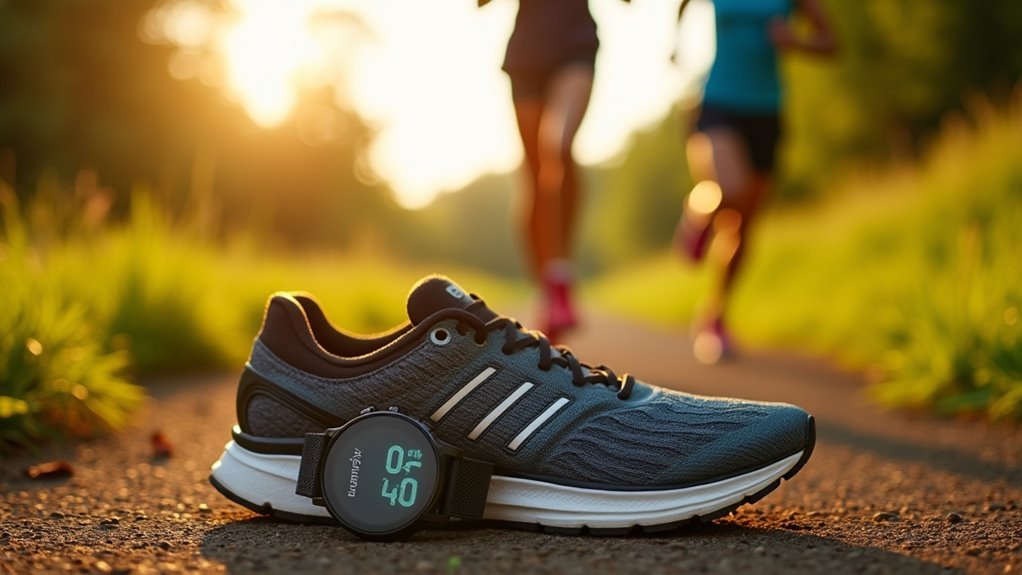
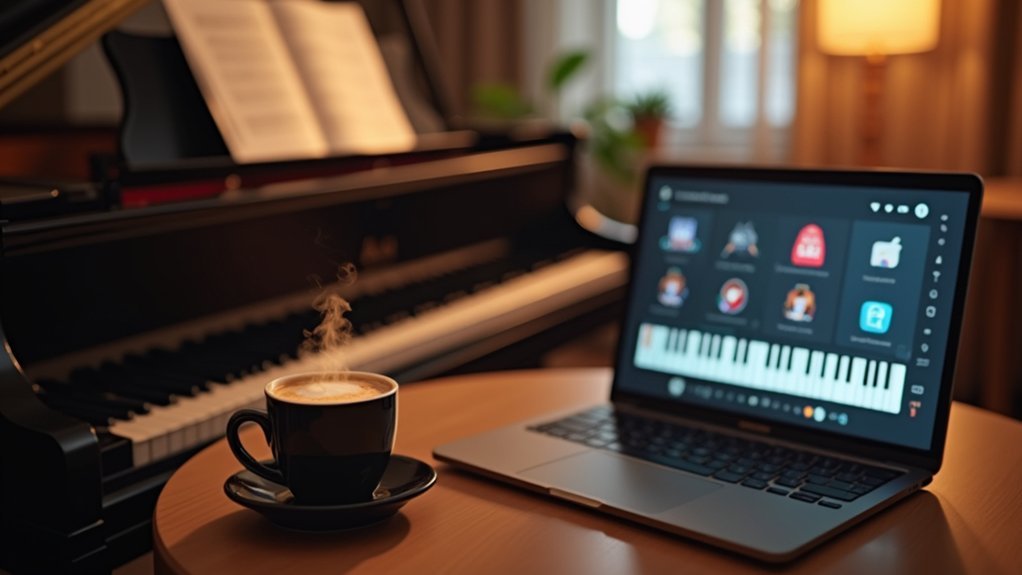
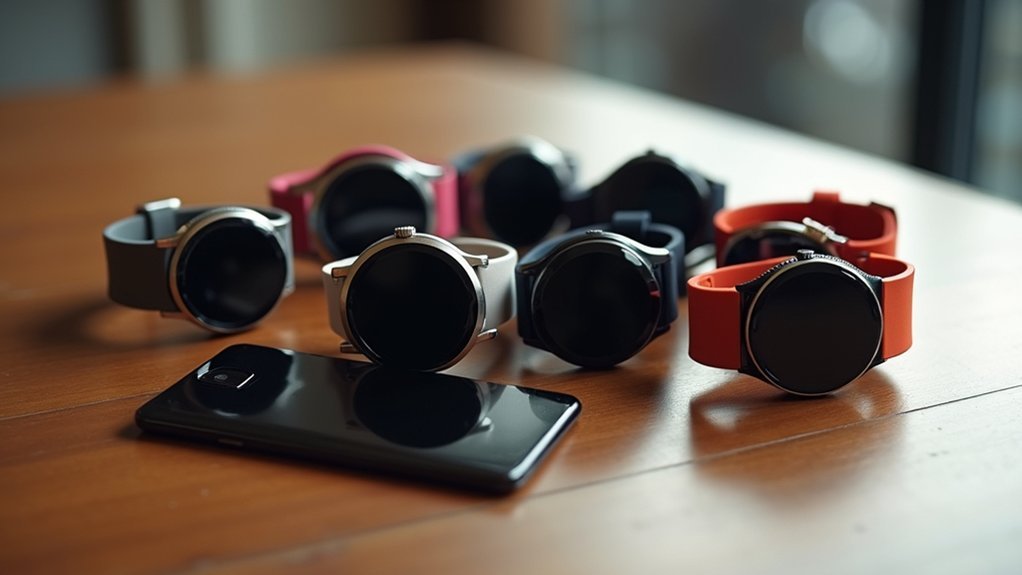
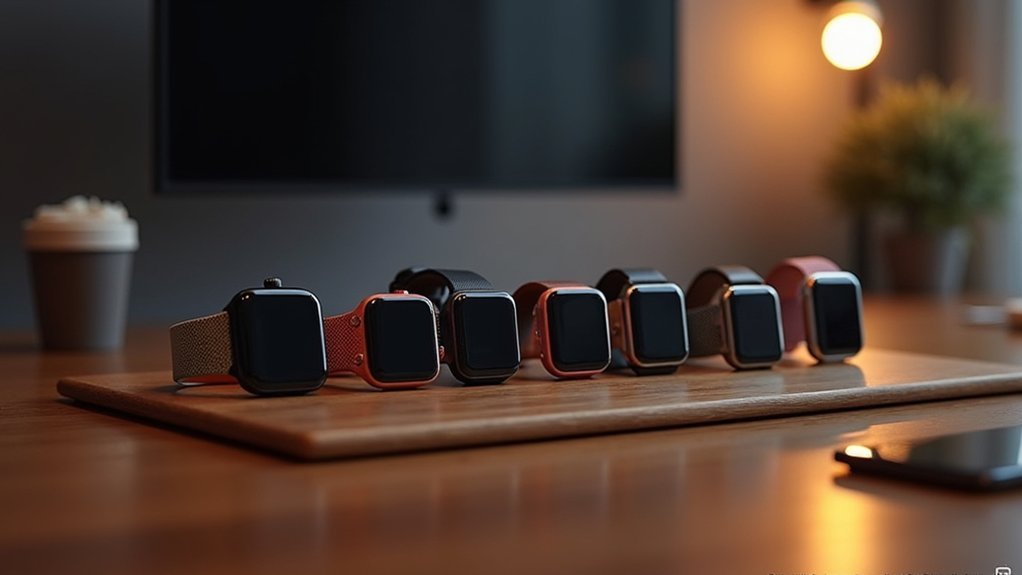
Leave a Reply